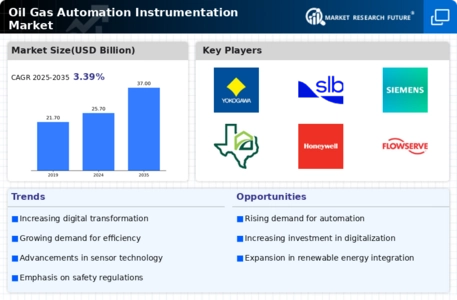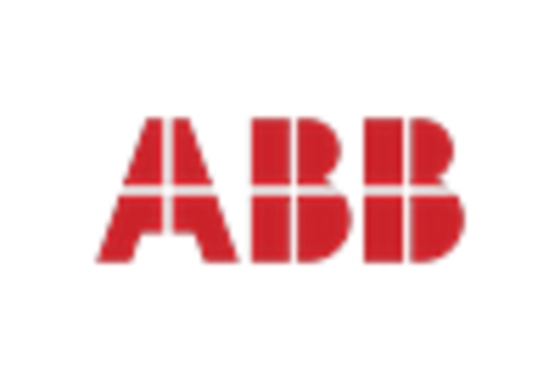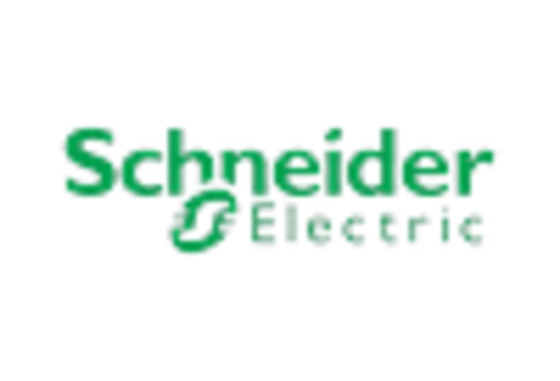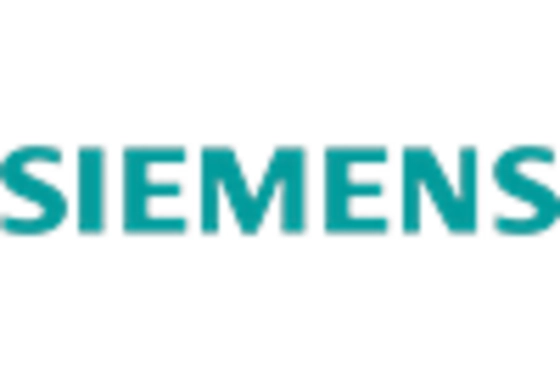The Oil Gas Automation Instrumentation Market is characterized by a dynamic competitive landscape, driven by technological advancements and the increasing demand for efficiency and safety in operations. Key players such as Emerson Electric Co. (US), Honeywell International Inc. (US), and Siemens AG (DE) are at the forefront, each adopting distinct strategies to enhance their market positioning. Emerson Electric Co. (US) focuses on innovation through its digital transformation initiatives, aiming to integrate advanced analytics and IoT capabilities into its offerings. Meanwhile, Honeywell International Inc. (US) emphasizes strategic partnerships and acquisitions to bolster its technological portfolio, particularly in automation solutions. Siemens AG (DE) is actively pursuing regional expansion, particularly in emerging markets, to capitalize on the growing demand for automation technologies in the oil and gas sector. Collectively, these strategies contribute to a competitive environment that is increasingly centered around technological innovation and operational efficiency.
In terms of business tactics, companies are localizing manufacturing and optimizing supply chains to enhance responsiveness to market demands. The market structure appears moderately fragmented, with several key players exerting influence while also facing competition from smaller, specialized firms. This fragmentation allows for a diverse range of solutions and innovations, fostering a competitive atmosphere where companies must continuously adapt to maintain their market share.
In August 2025, Emerson Electric Co. (US) announced the launch of its new predictive maintenance software, designed to enhance operational efficiency in oil and gas operations. This strategic move underscores Emerson's commitment to leveraging data analytics to minimize downtime and optimize asset performance. By integrating advanced predictive capabilities, Emerson positions itself as a leader in the automation space, potentially reshaping how companies approach maintenance and operational reliability.
In September 2025, Honeywell International Inc. (US) completed the acquisition of a leading AI-driven analytics firm, which is expected to enhance its automation solutions significantly. This acquisition reflects Honeywell's strategy to integrate artificial intelligence into its product offerings, thereby improving decision-making processes for its clients in the oil and gas sector. The incorporation of AI technologies may provide Honeywell with a competitive edge, enabling it to offer more sophisticated and efficient solutions.
In July 2025, Siemens AG (DE) launched a new suite of digital twin technologies aimed at optimizing the design and operation of oil and gas facilities. This initiative highlights Siemens' focus on digitalization and its potential to revolutionize operational processes. By enabling real-time simulations and predictive modeling, Siemens enhances its value proposition, allowing clients to achieve greater efficiency and reduce operational risks.
As of October 2025, the competitive trends in the Oil Gas Automation Instrumentation Market are increasingly defined by digitalization, sustainability, and the integration of artificial intelligence. Strategic alliances are becoming more prevalent, as companies recognize the need to collaborate to enhance their technological capabilities. Looking ahead, competitive differentiation is likely to evolve from traditional price-based competition to a focus on innovation, advanced technology, and supply chain reliability. This shift suggests that companies that prioritize these aspects will be better positioned to thrive in an increasingly complex and competitive market.

















Leave a Comment